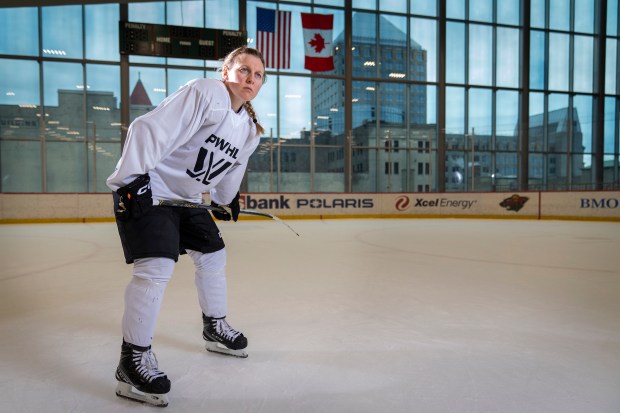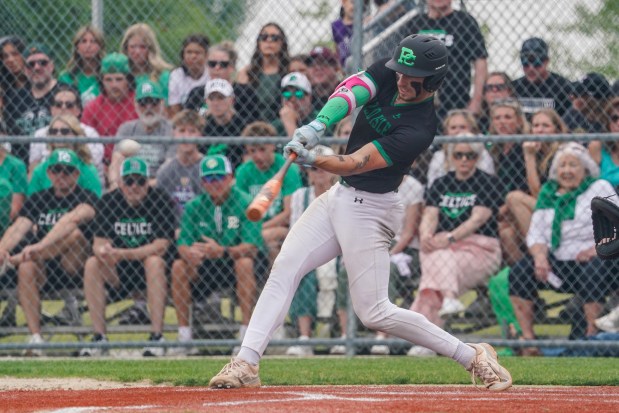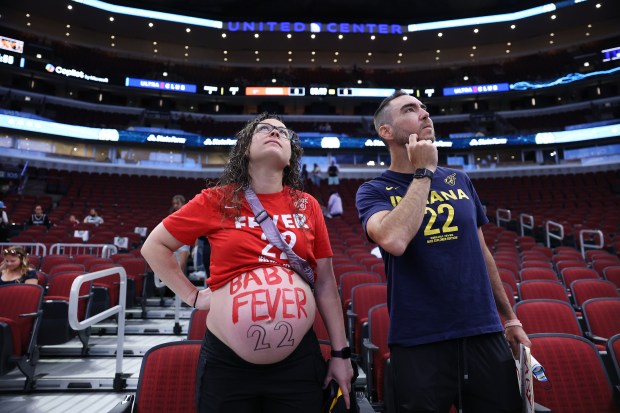As players took the ice for the first pregame skate of the Professional Women’s Hockey League, rapper Coi Leray’s “Players” played throughout the old Maple Leaf Gardens (now Mattamy Athletic Centre) in Toronto.
It wasn’t just a song but a message: “ ‘Cause girls is players too.”
Built in 1931 as the home of the NHL’s Toronto Maple Leafs and known as one of the cathedrals of hockey, the MAC on New Year’s Day was the perfect location on the perfect day for the PWHL to debut. In front of a sellout crowd of 2,537, history was made. It wasn’t just a new league but a new hope and a new beginning for players and fans alike.
For decades, the idea of a viable professional hockey league for women seemed impossible. Multiple leagues had started over the years — including the Canadian Women’s Hockey League and the Premier Hockey Federation (formerly the National Women’s Hockey League and purchased by the PWHL in 2023) — but all ultimately folded.
“In March of 2019, I made a phone call to Billie Jean King and Ilana Kloss, and the conversation was really quite simple in the sense that women’s hockey needs to be better,” Olympic gold medalist and Palos Heights native Kendall Coyne Schofield told the Tribune.
“We’ve seen everything that they’ve built and fought for in tennis and everything they’ve done. You see the kind of standards in tennis in which the men and women are treated equally. They’re the champions of equality. When thinking of how to fix women’s hockey, they were at the top of my list.”
The first woman to compete in an NHL All-Star skills competition, Coyne Schofield was selected with the third pick by the Boston Pride in the 2015 NWHL draft. In July 2016 she signed with the Minnesota Whitecaps. An elite hockey player at all levels, Coyne Schofield’s desire to continue playing professionally motivated her to make a new league a reality.
She got the numbers for King and Kloss from Angela Ruggiero, a Hockey Hall of Famer and her former teammate on the U.S. national team. Coyne Schofield and some other players who opted not to play in the PHF formed the Professional Women’s Hockey Players Association (PWHPA). They had grown tired of the working conditions and refused to join a league until they felt their needs were being met and they were treated as professionals.
“We can’t just keep being OK with the mediocrity of women’s hockey and accepting a salary of a couple thousand dollars, practicing twice a week, sleeping on air mattresses, not having meals, working two jobs and being OK with it,” Coyne Schofield explained. “For me and for a lot of other players, looking at a young girl in the eyes and saying, ‘You can be a professional hockey player’ … I couldn’t say that because I didn’t believe that opportunity existed. We were professional by name only because we weren’t treated as professionals.”
Because many players were holding down two jobs — some working as nannies, coaches or account managers — Coyne Schofield said they would “fit hockey in when they could around the job that allowed them to stay afloat.” After years of hoping for a professional league they felt was “truly professional,” they decided to try to move hockey in a new direction.
“We needed to come together,” Coyne Schofield said. “We needed to change the landscape of women’s hockey forever. And you realize quickly, there’s no handbook on how to do that.
“It took us a long time, longer than we would have hoped, of course. But through the unity of the group, the PWHPA that we formed under the advice of Billie Jean and IIana got to come together to have one voice.”
With the guidance of King and Kloss, players were able to strategize on how best to achieve their goal of a player-led league.
“They started a movement,” said Erica L. Ayala, a writer and hockey analyst. “Now it was a matter of getting what they perceived to be the right leadership and the right opportunities to make sure that whatever was left standing would have staying power.”
In 2019, the year of its formation, the PWHPA consisted of 200 players who were advocating for the creation of a new league to provide the environment and resources expected of a professional league. To further their cause and remain visible, players operated showcases.
“We would travel (to) play games and showcase the best players in the world,” said Hall of Famer Jayna Hefford, chairperson of the PWHPA and senior vice president of PWHL hockey operations. “(We) also advocated for how we could support them better and create something that would allow them to play in a league and be supported financially and have the professional experience that we all thought the game deserved.
“Through that work the first few years, we were really hopeful the NHL or someone else would come in and help lead that. It was after about the second year that we sort of decided, if we want to create this, we need to do it ourselves and we need to do the work.”
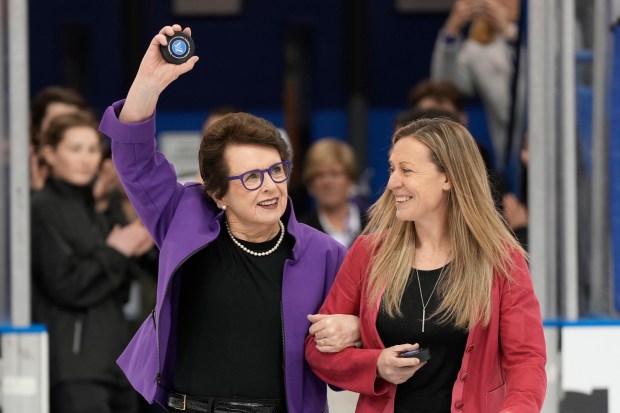
From there, Hefford said, they got in contact with Deloitte’s Canadian sport practice to talk through the players’ vision and come up with a business plan. In 2022, the PWHPA was able to secure an investor in Mark Walter, the part-owner and chairman of the Los Angeles Dodgers and a co-owner of Chelsea FC.
In a nod to the NHL’s “Original Six,” the PWHL started with six teams in its inaugural season: Montreal, Ottawa, Toronto, Boston, Minnesota and New York. The Mark Walter Group owns the league and all six teams.
“Mark and Kimbra Walter are the investors behind the new league,” Coyne Schofield said, “and Ilana and Billie believed in us, believed in what could be created, and they brought this to Mark saying, ‘Women’s hockey needs the investment, the support (and) the resources.’ They presented the business case to them because they (King and Kloss) were advisers to us this whole time.”
One thing that makes the PWHL unique is its collective bargaining agreement. Because the league formed through a collaborative effort by the players association, its advisers and the Walter Group, a CBA was in place before a game was played. When deciding how the agreement should look and what items were necessary to include, players looked to other women’s professional leagues.
“We stand on the shoulders of them,” Coyne Schofield said. “Through our collective bargaining process, we were learning from the WNBA, NWSL and the U.S. women’s soccer team. We were learning from all of those who came before us. We’re a few iterations behind them, but we get to learn from their successes and their failures. Everyone has been so willing and able to share what knowledge they have to ensure we were successful.”
Coyne Schofield called the creation of the CBA a “collaborative process” between the players and the ownership group. The agreement, which runs through July 31, 2031, covers items such as league minimum ($35,000) and average base ($55,000) salaries, bonuses and meals. It specifically mentions “pre-training and post-training and pregame and postgame meals that are appropriate for professional athletes.”
Coyne Schofield remembers not getting any meals in earlier leagues. Sometimes, she said, players brought a lunch box. She once took an Uber to get something to eat before a game because the team did not provide food.
“A lot of people ask me what was one of the most important pieces negotiated in the CBA,” she said. “And for me, it’s everything. Anything that we discussed that is in the CBA was important and was worth bargaining for.”
Coyne Schofield believes everyone had the same goal — to make the PWHL successful — and, she said, the Walters knew in order to achieve that, they would need to spend money. For example, general managers said they needed a third reserve player in case of injuries due to the league’s physical play. The Walter Group “didn’t balk at it,” Coyne Schofield said.
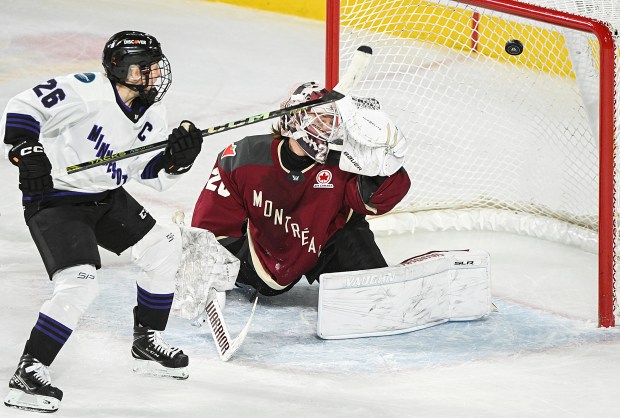
Another highlight of the CBA are the provisions for mothers. Among them, eligible players will continue to receive their base salary and all other benefits when pregnant, with guidelines as to when a player should return after childbirth and how to settle a difference of opinion between physicians.
“A critically important part before the launch was that a collective bargaining agreement was put in place,” Hefford said. “I’m not sure that any other league, men’s or women’s, has launched with a CBA in place with their players.
“Because everybody had the security, whether it was the owners knowing what their spend was, what their commitments were in the long-term sustainability of the league, and then you’ve got the players who also have the security and knowing what support they’re going to have. Having that all in place allowed us to almost put that to the side and say, OK, now we get to build the league.”
From the June 30 announcement of the league’s formation, the PWHL had six months before its inaugural season began. During a 10-day free-agent period, each team could sign three players before the draft in September in Toronto. Coyne Schofield was among the first 18 players to sign, agreeing to a three-year contract with Minnesota.
For the 2024 season, 138 roster spots were available across the six teams. The league did not hold a combine, so general managers had to assess talent internally, though a list of registered players and a ranking of top prospects were provided.
Sophie Jaques, winner of the 2023 Patty Kazmaier Award given to the best college player in the nation, was selected with the No. 10 draft pick by Boston and signed a three-year contract. At Ohio State, Jaques scored 156 points in 172 games, and in 2022 she helped lead the Buckeyes to their first NCAA championship in women’s ice hockey.
Despite all of her success, Jaques never dreamed of playing hockey professionally.
“Growing up and playing hockey, my dream was always just to play Division I hockey and to get a scholarship to go to school,” she said. “Playing professionally was never a dream I had or something that I even thought would have been possible until very, very recently. The dream was to make the national team and play college hockey, but outside of that there wasn’t much to strive for in women’s hockey.”

When she found out about the PWHL last summer, Jaques’ dream shifted.
“It’s definitely going to help make hockey a more inclusive sport,” she said. “For little girls to have female role models they can look up to and be able to dream to play professional hockey is just so incredible. Watching the little fans we have at our game, you give them a wave, they’re smiling and it makes their day, so just seeing their happiness is really rewarding.”
In the PWHL’s first blockbuster trade, Jaques was sent to Minnesota on Feb. 11 for forward Susanna Tapani and defender Abby Cook.
Fans of the sport have jumped at the opportunity to watch some of the best North American hockey players in one league regularly instead of every four years in the Olympics. The first game of the season, which was livestreamed on YouTube, had 163,000 viewers and the buzz has been electric on social media.
Coyne Schofield isn’t shocked by the league’s reception.
“People have been waiting for it. Players have been waiting for it. The game has been waiting for it,” she said. “And with the proper structure, resources and funding investment, I knew this was possible.
“I’ve seen what professional hockey looks like on the men’s side since I put on my first pair of skates at 3 years old. And in my eyes, there’s no reason women shouldn’t have that same opportunity.”
Both Coyne Schofield and Hefford said the momentum doesn’t stop with the first six cities, and they hope to move into other markets — including Chicago — down the road.
“Chicago is very high on our list of markets that we really liked, and there’s a connection to the ownership group and Mark Walter in the Chicago area,” Hefford said. “Finding the right venues is something that we looked at very closely in Chicago. It’s a market that, somewhere down the line, there’s a good possibility we end up in, and it’s one we really like. But we have a lot of work to do to build up these original six markets first and then go from there.”
Until Chicago has a team of its own to support, both women encouraged fans to check YouTube, where PWHL games are “just two clicks away.” All 72 regular-season games can be streamed.
As the PWHL continues to find its footing in the sports landscape, Coyne Schofield, 31, has found hope and happiness in helping the game grow.
“I have been on this journey to help leave this game a better place than when I entered it,” said Coyne Schofield, who has four goals and two assists in Minnesota’s first 12 games. “Because it has been very hard.”
On Feb. 16, 19,285 fans packed Scotiabank Arena in Toronto for a PWHL game between Montreal and Toronto. It was the largest recorded crowd at a women’s hockey game.
“There have been days that you don’t know if it’s possible, but then you take a deep breath,” Coyne Schofield said. “You look at the people you have around you, you look at everything we’ve sacrificed, the amount of players that are supporting this mission, the advisers who never lost hope or faith in the vision that we were striving for — and that gives me so much confidence and resilience through this entire process.”


